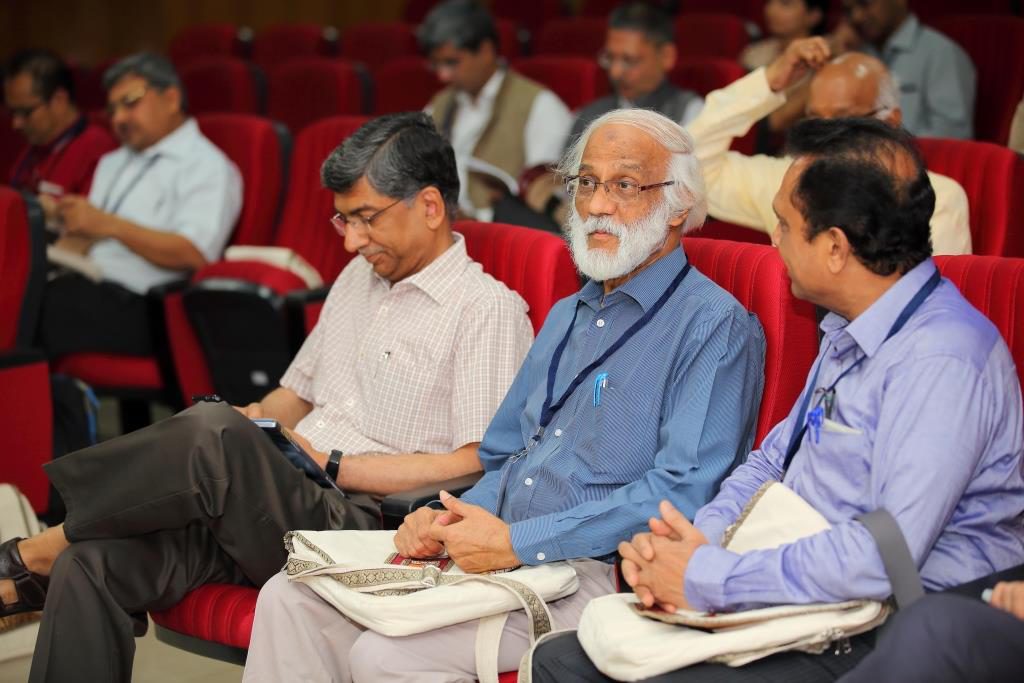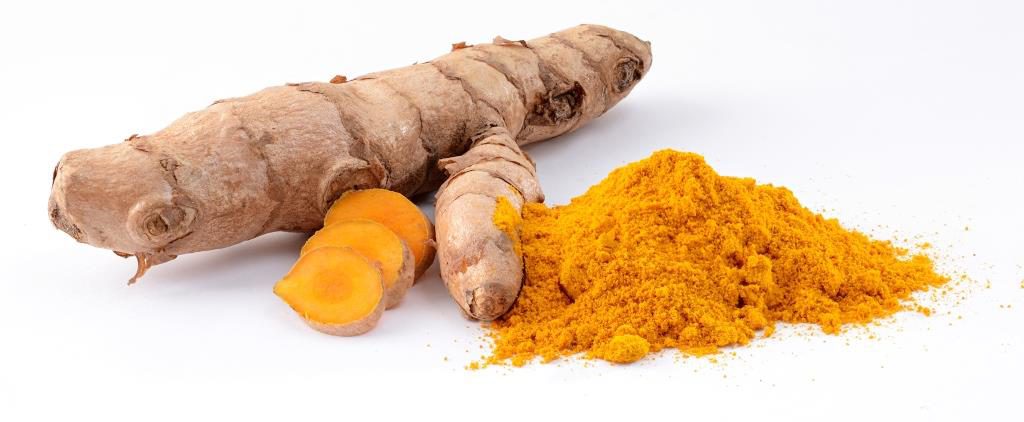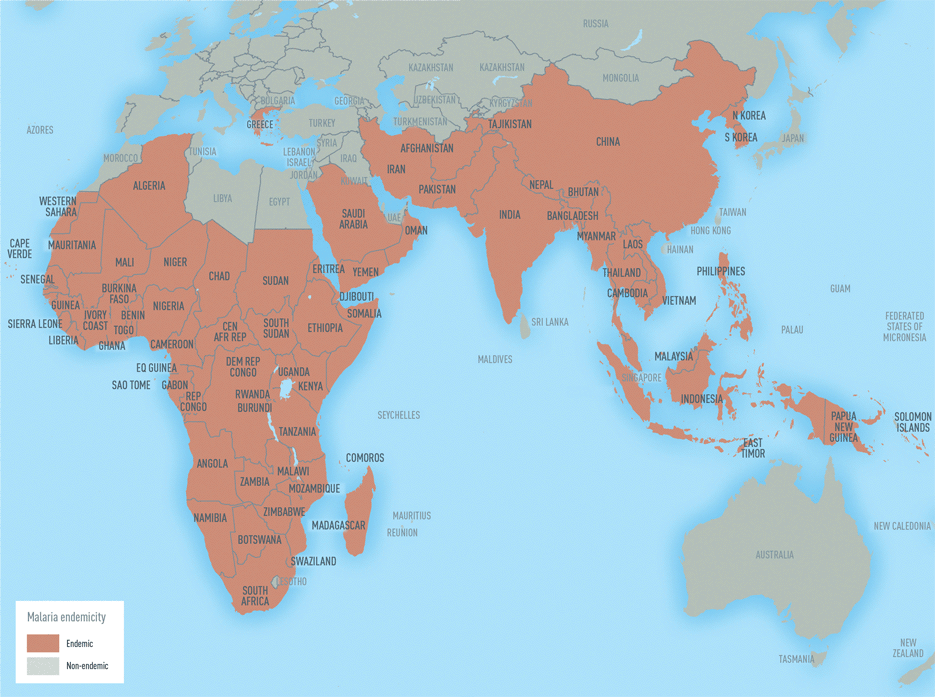Govindarajan Padmanaban is a celebrated biochemist and biotechnologist, known for his work on malaria. In a career spanning 50 years, he has mentored several students, helped establish start-ups and several research institutes. Recently, Padmanaban turned 80 and on 23 March 2018, the Director, Anurag Kumar, released the second volume of his memoir, titled Doing Science in India: My Second Innings, published by IISc Press. In this memoir, Padmanaban dwells on his life and research post-retirement. While a part of the book is dedicated to his research on malaria, he also writes about challenges in Indian science, ranging from the lack of infrastructure and inadequate funding to the importance of innovation in renewable energy, agriculture and healthcare sectors.
Besides discussing Indian science, he defends genetically modified (GM) crops, which, according to him, could address issues of crop productivity. In an interview with Connect, Padmanaban spoke about different facets of doing science in India – the challenges, the unfair age limit for retirement imposed on public sector scientists, the perils of not engaging in public outreach, innovation in the country and his own research.

Do you think people aren’t getting drawn to pursue research because of the long years of preparation it demands and the belief that a career in science doesn’t lead to cushy well-paying jobs?
It takes, on an average, over five years to get a PhD. In India, if you have to do good science in a good institution it does take that many years!
Most researchers I know have done well after a PhD: they go abroad, make some money, and then, a few settle down in India. One can lead a decent life. Secondly, this profession gives a sense of satisfaction that you can address and try to solve an issue of relevance to society. In a company, we are asked to work for the company, whereas as a scientist, I can choose to work on whatever I’m interested in and I get paid for that!
How would you say one can popularise science?
Apart from all the standard measures in place, I think scientists should also get some recognition that is appreciated by the public. We have heard of Indian of the Year awards. But have you ever seen scientists on the list? We don’t see that. Awards go to sportsmen, entertainers, ordinary people who make a difference to society – but not scientists. Not that we [scientists] are yearning for such awards as a sort of recognition. It will send a signal to the community that science is recognised by the public. And when this is done, youngsters will get motivated.
Generally, we don’t find science as a priority among kids who prefer engineering, medicine and commerce. I believe that without science and technology, there would be no development in society. Scientists tend to withdraw themselves, aiming only to produce papers in reputed journals. Of course, we have our own path of getting recognised in the scientific community. Does society get any benefit out of it?
In your book, you express disappointment over the difficulties faced by retired scientists who want to continue doing research. How do you think this issue can be addressed?
This issue faced by public sector scientists has been raised with the government. But I’m told that the Indian Administrative Service lobby does not like this because they have to retire at 60. What usually happens is that scientists move to private universities where they are allowed to work even up to 70. But it’s difficult to start research built over the years in a new place. In India, most of the research gets done in public sector laboratories and much less in the university system. It looks unfair that while Central universities, IITs and IISc permit service at least up to 65 years of age, public sector scientists have to retire at 60. Unlike IISc, many institutions, especially universities, do not accommodate retired scientists who wish to continue with research. We are missing out on gaining from a lifetime worth of experience in science. This can be changed without interfering with the careers of scientists in service. I feel we should have large numbers of contract appointments made for retiring scientists who choose to work. They should be allowed to continue in the same institution and lab, while also being allowed to hire research staff. But retired scientists should not have administrative positions of authority in the same institution.
In the recent past, we have had people holding responsible positions making statements with no scientific basis. In times like these, should scientists be more involved in public outreach?
Public outreach is very important. I think there is a lacuna in the Indian system. Of course, some of the government agencies have a separate wing to engage with the public. As scientists, we tend to isolate and confine ourselves within our labs. One problem, I think, is that many scientists may be good in communicating science within the scientific community but are not good at expressing this to the public, and it’s even worse when it comes to communicating in a vernacular language.
One example of the lack of public outreach is the issue of GM crops, of which I am a proponent. But to my mind, if scientists had engaged with the public earlier, we could have addressed the real concerns. Now, we have a lot of imaginary and engineered concerns such as claims, from non-governmental organisations and other activists, that GM crops cause harm to the health and the environment. The Bt gene from the bacteria Bacillus thuringiensis has been in use for the last 75 years and we have had no major issues of health or environment reported in the last two decades of GM crop (corn) consumption by millions. While genuine concerns should be addressed by scientists, we cannot handle people with vested interests.
You have written about GM crops and the controversies surrounding it. Bt cotton is said to be resistant to pests. But in India, the pink bollworm attacks Bt cotton, whereas this is not the case in countries such as the US and China. Why has this happened?
Indian farmers use hybrids, while those in other countries use varieties. Hybrids give better yields than varieties but farmers cannot reuse the seeds and so companies prefer to sell hybrids. But varieties can be packed and grown densely, unlike the hybrids, compensating for lower yields. To increase yields, Indian farmers grow hybrids for a longer period, which increases exposure of pests to the toxin, causing the pest to eventually become resistant. Our yield of Bt cotton hybrids is less than 50 percent of China’s, which uses varieties. Another advantage [of using varieties] is that farmers can reuse seeds.
In 2016, a 400-page report released on GM crops by the US National Academies of Sciences, Engineering, and Medicine specifically mentions why India is the only country where pink bollworm has developed resistance to Bt cotton. The two reasons for this are: India doesn’t follow the refuge strategy – the practice of using 10-15 percent non-Bt cotton in a field containing Bt cotton crops. When this method is followed, pests attack the non-Bt cotton, leading to reduced exposure to the Bt crops, thereby reducing pressure on the pathogens to grow resistant to the Bt toxin. The progeny between a pest potentially resistant to the toxin and one that is sensitive to the toxin would be sensitive to the toxin. Indian farmers don’t follow this method; they want 100 percent Bt in their land.
The other thing is we need to ensure that the expression of the toxin remains high, such that it is adequate to kill the pest. The pest load can sometimes be high, moderate or less. This should be tested every season. Analysis of the expression in labs should be a part of the extension programme. I don’t think farmers have any help at all. If you give them the crop and leave them on their own, what will they do? They’ll end up spraying more pesticides to safeguard their plants! So farmers should be advised and mentored. Labs should analyse samples and, these days, results are available in a few hours. Agriculture needs this kind of an extension activity.
What do you think needs to be done at the moment to set things right?
I think the government itself is not very clear on this [GM crops]. Why do we still have an embargo on Bt brinjal when Bangladesh is successfully growing this? For GM mustard, all that is needed is approval for commercial trials. It [GM mustard] is a hybrid, which means farmers cannot use it after a year. If cultivated, in a season or two, we will have the results. If results are good, farmers should be allowed to go for it. There are many hybrids that the Indian Council for Agricultural Research introduces, some [hybrids] are good and some are not. We don’t hear about poor performing hybrids later. This can also be applied to GM crops. Scientific validation should be allowed. Then, compare the results with non-GM crops and make a decision. That is all that is asked for. Overnight it [GM mustard] will not become a commercial crop. I have mentioned it in my book. Activists are probably afraid that GM mustard may succeed!
Could you tell us about Biotechnology Industry Research Assistance Council (BIRAC) and your association with it?
BIRAC is a Section 8 company of the Department of Biotechnology that provides funding and mentoring for projects with industry. The whole effort started a decade ago and BIRAC became a formal entity six years ago. It is a public-private partnership and several schemes are available for the industry with or without academia partnership. I chair the Technical Evaluation Committee (TEC), which reviews and shortlists all projects. We call them [applicants] for presentations. This is followed by site visits and then there is further shortlisting. Once we approve a project, the administrative team takes over. BIRAC has supported around 700 projects with 500 industries and close to 100 products have become a reality.
From your experience as the Chair of TEC, do you think there is a dearth of innovation in India?
I don’t think we are not creative or innovative. For example, we have a scheme in BIRAC called Biotechnology Ignition Grant (BIG), where young people just out of their academic journey approach us to fund their start-ups. They do have bright ideas. Once we select them, we give them Rs 50 lakh for a period of 18 months. Some of the brightest projects are coming from BIG. This tells me that there is no dearth of innovative ideas among young people. I think over a period of time this innovation gets killed because the environment doesn’t have the support system to foster innovation. If they [young people] didn’t have the BIG project, for example, to support them, they would have gone abroad to do their postdoctoral research or work with somebody there. The reason why we don’t have an environment that is conducive to innovation is that we are afraid of failure. The system, in general, doesn’t allow a person to try again. There is scope for BIRAC-like support towards translation in many other fields of Research and Development.
Moving on to your research, artemisinin-based derivatives [also called ART derivatives obtained from Chinese traditional medicine] is the universally approved drug for malaria. Your research suggests that when curcumin is used in combination with ART in mice, the infection doesn’t relapse. And yet, clinical trials are still pending. How are you going to take this forward?
I don’t know. My research shows that by using it [curcumin] as an adjuvant, it bolsters the immune activity of the host, despite its poor bioavailability. These results are all published in well-established journals.

Clinical trials have to go through the New Delhi-based National Institute of Malaria Research (NIMR), which is my clinical trial partner. I have been communicating with them [NIMR] by sharing my ideas and answering queries from the office of the Drug Controller General of India. This has been going on for more than five years. The problem is that there is confusion as to how to treat a natural molecule like curcumin, which does not satisfy the classical parameters of medicinal chemistry, as a drug. Its mechanism of action is different and it acts through creating an immune memory to fight against the parasite long after it has disappeared from circulation.
What are you working on now?
While I stay at IISc, my group has moved to the Institute of Life Sciences, Bhubaneswar and I am part of the group. My research continues through regular Skype meetings, emails and personal visits. The aim is to prove our hypothesis that though curcumin doesn’t kill the malaria parasite directly, it generates memory against those antigens [from the pathogen] by producing antibodies or working in combination with T cell memory. This is important because if pathogens strike again, antibodies and cell-mediated immunity would be in a position to recognise and kill them.

We are also working on blocking transmission of malaria. There is a big move to eradicate malaria all over the world. But in India, our focus is on controlling and not eliminating malaria. African countries focusing on elimination have decreased malaria by 50 percent. We have not done it yet. At the research level, we have shown that the heme biosynthetic pathway of the parasite is essential for its development in mosquitoes. When the parasite is prevented from making heme, it fails to develop in mosquitoes, blocking transmission to humans. This pathway is a good target for designing drugs. We can now look for heme biosynthetic inhibitors.




